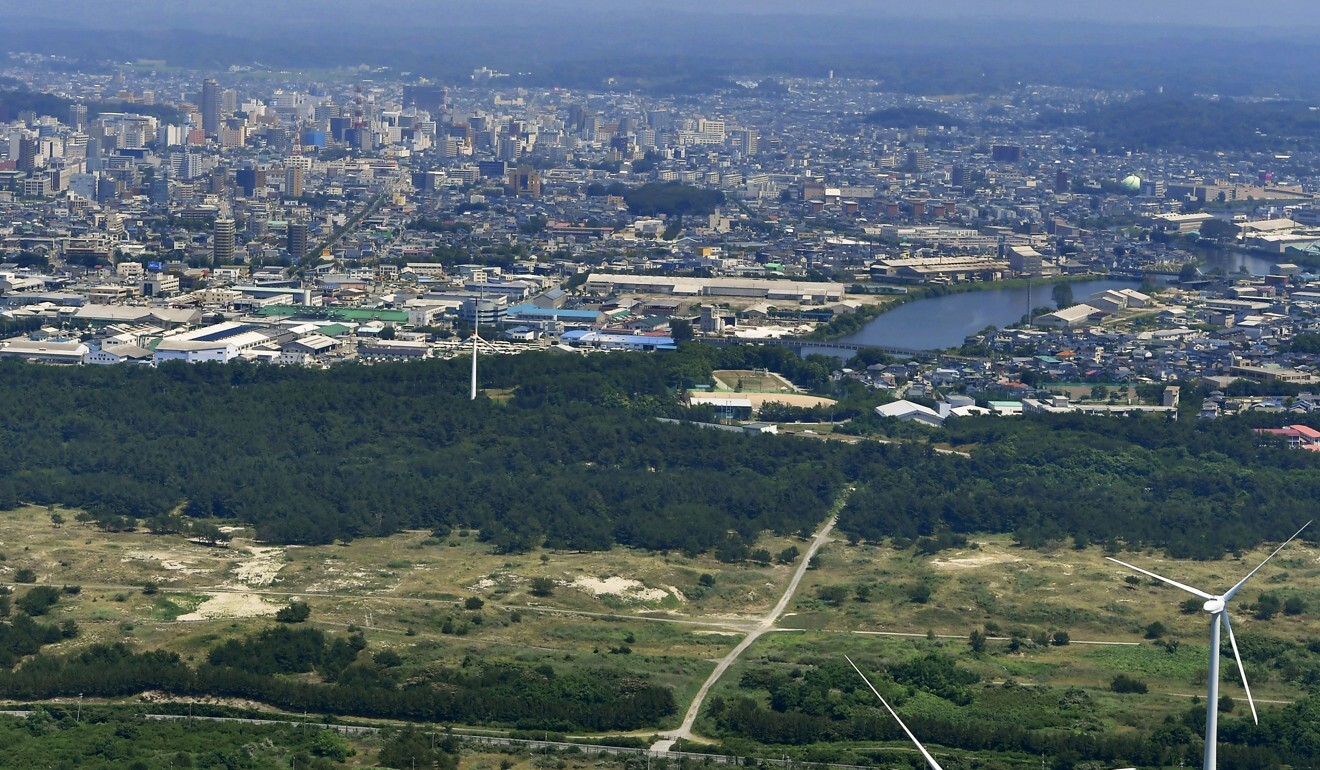
What’s next for Japan’s defence after scrapping US Aegis Ashore system?
- Tokyo’s tracking of a foreign submarine has focused attention on its security plans after it announced the scrapping of a US-developed anti-missile system
- Factors the country is weighing up include the impact of the coronavirus pandemic and Washington’s commitment to its regional allies
The Ministry of Defence has not confirmed the nationality of the submarine, which was travelling west when it traversed the contiguous zone immediately outside the 12-nautical-mile limit of Japan’s territorial waters around Amami-Oshima island. The vessel did not enter Japanese waters, and a destroyer and patrol aircraft were dispatched to track its movements.
Garren Mulloy, professor of international relations at Daito Bunka University, said the fact that the submarine was detected operating in waters close to Japan was not entirely surprising – but Tokyo’s decision to announce its presence was more noteworthy.
Japan city renames area covering Senkaku Islands, triggering China tension fears
“Japan has not said who was operating the vessel, but the strong suspicion is that it was Chinese,” he said. “It was not doing anything out of the ordinary and was exercising what is known as innocent right of passage.”
Chinese submarines were obliged to traverse the shallow and relatively narrow channels between the chain of islands made up by Japan, Taiwan and the Philippines if they were to operate in the deeper and safer waters of the Pacific, Mulloy said.
“So they are trying to do that without being picked up,” he said. “Although Tokyo announcing that they have been detected is a double-edged sword.”

01:11
Japan’s economy gets US$1.1 trillion stimulus after coronavirus state of emergency ends
Akitoshi Miyashita, professor of international relations at Tokyo’s Sophia University, said he believed Beijing’s motivations for keeping up its high-profile geopolitical and military manoeuvrings were twofold.
“I think they are trying to exploit the problems that the coronavirus pandemic has caused for governments in the region, but I also believe that they are on the defensive after being accused of being the source of the illness, so they are also trying to divert attention elsewhere,” he said.
The present strategy, approved in December 2013, had at its core the need to protect the nation from the threat of ballistic missiles. The potential sources of a missile attack were never explicitly spelt out, but are widely accepted to be North Korea and China.
Japan files diplomatic protest over Chinese ships near disputed Diaoyu Islands
New factors that Tokyo must now consider in its defence plans include the impact of the coronavirus pandemic, questions surrounding the commitment of the US to its allies in the region, and new spending constraints given the nation’s economic situation.
According to Miyashita, Japan “wants to see what the US is going to do with its own new defence policy” after the American election later this year. A second term for President Donald Trump, for example, would probably require a very different approach to security issues than if a different president was elected in November.

“It is very possible that the US may change its own missile defence projects and Japan may want to see those new plans and then see how we can cooperate or integrate into those plans,” Miyashita said.
Miyashita and Mulloy agree that the planning and handling of the entire Aegis Ashore project was conducted “very poorly” by the ministry, which incorrectly mapped the terrain close to proposed sites for the bases, apparently failed to take into consideration that parts of a missile that had been launched might fall on nearby residential districts, and failed to win local people over to the project.
“The other good reason that they are cancelling it is because of the high price,” said Mulloy from Daito Bunka University, adding that it is very possible that Tokyo initially agreed to buy the system from the US in order to “curry favour” with Trump at a time he was putting pressure on Japan to pay more for its own defence.
A glove affair: the Japanese man who’s obsessed with lost gloves
And while ballistic missiles do potentially pose a threat to Japan, it appears that Tokyo is willing to delegate the task of intercepting inbound missiles to the Aegis-equipped destroyers that it already operates and will focus its attention elsewhere.
Mulloy points out that Japan is increasingly concerned about its ability to resist cyber warfare attacks and is expected to invest heavily in defences against this sort of attack, as well as space warfare that would target its communications and spy satellites in the event of a conflict. The importance of having solid defences against a cyberattack were underlined last week when Australia announced that it had been the target of repeated attacks from an unnamed country, once again understood to be China.
Other issues that will be under discussion for the revised National Defence Programme Guidelines include the strengthening of supply chains for medical equipment and the introduction of measures to deal with future pandemics, steps to prevent advanced technology being leaked or stolen, and the securing of maritime assets.

